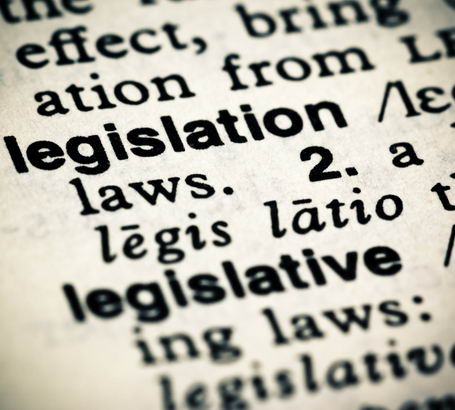
This section summarises the general entitlements of children/young people with disabilities.
The slides focus on understanding rights, duties and procedures and their interrelationships. One of the challenges to understanding special needs is to unscramble how these aspects interplay.
In the US constitution, some rights are defined as 'inalienable' and are said to be enduring. No matter what happens, they cannot be retracted. In everyday life though, such outcomes are less certain – since one person's rights (or freedoms) may diminish another person's rights (or freedoms). And it is these very rights that are defined by law as entitlements.
All children (ie disabled and non-disabled individuals under the age of 18 years) have ‘human rights’ that are defined by the United Nations Convention on the Rights of the Child (1989). The Children Act 1989 was intended to incorporate these rights into UK law.
As UK citizens, disabled children have the same ‘civil’ rights as their peers. Civil rights ensure ‘protection as citizens under the laws of the society in which they live… [ensuring] access to their universal human rights’ (Morris, 1999).
Entitlements are based on the recognition that some children have differences that need additional requirements if they are to access their rights to be treated the same as all (Morris, 1999).
‘The recognition of difference…can be an important way of getting access to the same things as everybody else…[However] it is all too often in a context of being separated from non-disabled peers and being denied both their civil and their human rights.’ (Morris, 1999)

A major update to the special educational needs framework through the Children and Families Act 2014 has been the inclusion of the definition of ‘health care provision’ and ‘social care provision’ alongside ‘special educational provision’. These are defined in section 21.
Local authorities undertake needs assessments of children referred under the Children
Act 1989 to determine (a) which of their needs, if any, are significant enough to
warrant the
provision of services, and (b) what services to provide and action to take (Broach
et al., 2010).
These may include specialist assessments if indicated, which,
wherever possible, should be coordinated within a coherent process and a single plan
of action or the benefit of the family.
The assessment should also identify
any provision to be made under the Chronically Sick and Disabled Persons Act 1970.
Children/young people under the age of 18 with special educational needs or disabilities who are assessed to be ‘in need’ under the Children Act 1989 (section 17) are entitled to:
- A multi-agency assessment;
- A child in need plan;
- Services for the purposes of safeguarding and promoting their welfare (e.g. residential and foster care short breaks).
The assessment should be timely to avoid the need for care proceedings (resulting in a care order) by providing effective family support (Broach et al., 2010).

When a child with disabilities is the subject of a care order (eg needs a residential placement or has no-one with parental responsibility) and becomes a ‘looked after child’, the local authority becomes the ‘corporate parent’; they then have a duty to accommodate them, assess their needs and draw up a care plan.
After the age of 16, the child with a care order will also have a 'personal adviser' and 'pathway plan' in preparation for 'leaving care'. The Children and Families Act 2014 has amended the Children Act 1989 so that, as long as a young person aged between 18 and 25 years has an Education, Health and Care (EHC) Plan (Children and Families Act section 37), they will continue to receive services they already receive under the Children Act 1989.
NHS legislation (1)

Whereas local authorities have specific statutory duties to assess and respond to the needs (eg social care, housing) of individuals with disabilities, health bodies (eg GPs, hospitals) have no explicit duty under either the NHS Act 2006 or the Children Act 1989 to assess the healthcare needs of a disabled child (Broach et al., 2010; Parker et al., 2012).
However, the House of Lords has ruled that under public law (ie achieved by judicial review) such a duty does exist within the Children Act 1989 in respect of the child’s care needs (Broach et al., 2010). It is ‘an essential part of a process that must be followed by NHS bodies in order to exercise their statutory duties’ (Parker et al., 2012).
The statutory duties of health bodies are to:
- Ensure a comprehensive health service (eg services providing general medical (GP) services, hospital accommodation, illness prevention, and the care and after-care of people suffering from illness);
- Commission and provide health care (ie Clinical Commissioning Groups);
- Comply with general public law to act reasonably and uphold principles with regard to service provision, human rights law, etc;
- Fulfil their duty to assess (implied) as an essential part of a process of exercising their statutory duties;
- Cooperate with local authorities (see the Children Act 1989, the Carers (Equal Opportunities) Act 2004, the Children and Families Act 2014) and The Care Act 2014.
It is worth noting that non-statutory guidance, as well as statutory guidance,
can be influential. While the Children, Young People and Maternity Services National
Service Framework (Department for Education and Skills/Department of Health, 2004)
is not statutory, NHS bodies must take its standards into account.
These standards
are used by ombudsmen to uphold complaints in cases where NHS provision has been unacceptable
(Parker et al., 2012).
NHS legislation (3)

The need for specialist services to meet complex health needs may be identified; for example:
- NHS continuing care;
- Age-appropriate child and adolescent mental health services (eg CAMHS);
- Palliative care.
For previous guidance (now archived) on continuing and palliative care, see ‘Further reading’.

Legislation and guidance
- Chronically Sick and Disabled Persons Act 1970
- Children Act 1989
- United Nations Convention on the Rights of the Child (1989)
- Carers (Equal Opportunities) Act 2004*
- Children, Young People and Maternity Services National Service Framework (Department for Education and Skills/Department of Health, 2004)
- NHS Act 2006
- Working Together to Safeguard Children (HM Government, 2013)
- Mental Health and Behaviour in Schools (Department for Education, 2014)
- Children and Families Act 2014
- Care Act 2014
* These Acts are likely to be replaced in whole or in part by the Children and Families Act 2014 and the Care Act 2014

- Broach, S., Clements, L. and Read, J. (2010) Disabled Children: A legal handbook. London: Legal Action Group/Council for Disabled Children. [Online at: http://www.councilfordisabledchildren.org.uk/media/80200/CDC _LH_Chap_5c.pdf; accessed: 24.1.15]
- Jenny Morris (1999) ‘Disabled children, the Children Act and Human Rights’. Presentation to the ‘Young and Powerful’ Conference, organised by Disability North (26 May). [Online at: http://disability-studies.leeds.ac.uk/files/library/morris-Disabled- children-the-Children-Act-and-human-rights.pdf; accessed 15.1.15]
- Parker, C., Clements, L. and Honigmann, J. (2012) ‘Disabled children parents’ guide: social care, housing and health. Carmarthen: Cerebra. [Online at: http://www.cerebra.org.uk/English/getinformation/disabilityrights legalissues/Documents/Disabled%20Children%20Parents%E2 %80%99%20Guide%20Social%20Care,%20Housing%20and.p df; accessed 15.1.15]